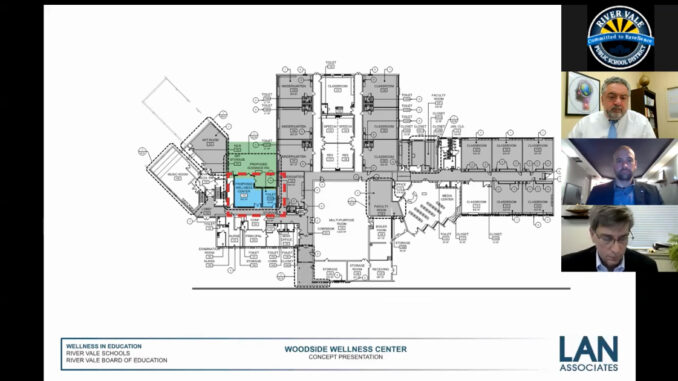
RIVER VALE, N.J.—Voters said yes to borrowing approximately $34 million in a bond referendum to upgrade school facilities and install air conditioning at Roberge and Woodside Elementary schools and Holdrum Middle School, according to final vote tallies the Bergen County Clerk’s Office confirmed on April 27.
Voters defeated a question seeking wellness/mental health centers at the elementary schools, which would have cost $1.7 million.
Of the township’s 8,561 registered voters, approximately 19% turned out for the April 20 school referendum, elections officials said.
Interim Superintendent Frank Alvarez said immediately after the vote was confirmed, “We are thrilled with the outcome of the bond referendum election. We are thankful to those who supported the referendum, and grateful to the communications committee and the PTA for working to inform the community about its benefits.”
He added, “Our students will have an improved school experience for years to come.”
Reacting to the defeat of question 3, Alvarez noted, “Student wellness needs are extremely important. We will find a way to accomplish what was intended, even if the improved physical space is not available.”
The district told Pascack Press that architects will now begin design work and will prepare contracts for bid. The projects are expected to be completed over a three-year period.
By approving the first two questions, voters added $123 in annual taxes over the bond’s 25-year life. Had they approved question 3, the annual total would have cost $148.
While voters narrowly approved questions 1 and 2 on the April 20 school referendum, question 3 to create wellness centers in its two elementary schools was defeated.
The rejected question would have added wellness centers—areas where students could relax, refresh and reduce stress—to Roberge and Woodside elementary schools at a cost of $1.7 million in bonded debt.
By the numbers
Question 1 passed, 814–783. That total included provisional votes cast (17 yes and 11 no) and mail-in ballots (137 yes and 119 no).
Question 2 passed, 827–766. That total included provisional votes cast (17 yes and 12 no) and mail-in ballots (141 yes and 114 no).
Question 3 failed, 857–732. That total included provisional votes cast (17 yes and 12 no) and mail-in ballots (130 no and 124 yes).
The final vote tallies on questions 1 and 2 were too close to call until final provisional votes were vetted and counted and late-arriving mail-in ballots (postmarked April 20) were received up to and including April 26.
Out of 36 provisional votes cast, only 30 could be counted after vetting by county Board of Elections officials.
Question 1 was required to pass for either of the other two questions to pass, as the $25 million in facilities upgrades, including classroom and building expansions, roof replacements and new entryways were needed before the air conditioning upgrades (Question 2) and elementary wellness centers (Question 3) might be added.
Question 1 addressed the schools’ physical needs and requested voters’ permission to borrow up to approximately $25 million. That borrowing would add $34 to an average homeowner’s annual property taxes over the bond’s 25-year period, district officials said.
Question 2 focused on adding air conditioning in all classrooms and common areas in the three schools. Over the decades, this question has been a sensitive topic but it appears to have more support. Question 2 asked voters to approve slightly over $9 million for air conditioning upgrades, and would add $89 per year to the average homeowner’s tax bill.
Question 3 would have created mental health wellness centers at the two elementary schools. That question asked voters to approve borrowing slightly over $1.7 million, which would have added $25 to an average property tax bill.
Officials stressed that by the district holding a referendum, the state would pay about one-third of the project cost, or about $10 million, to lower the impact on property taxes.
Moreover, the district was contributing $6.7 million in capital reserves, making the total project amount about $42.5 million. The defeat of question 3 reduces the total project cost to slightly over $40 million, including $34 million in bonded debt.
Officials said that a previously approved 20-year schools bond was retiring this year, making 2021 an opportune time to bond for needed school upgrades.
— What do you think? Sound off in our Letters section!
